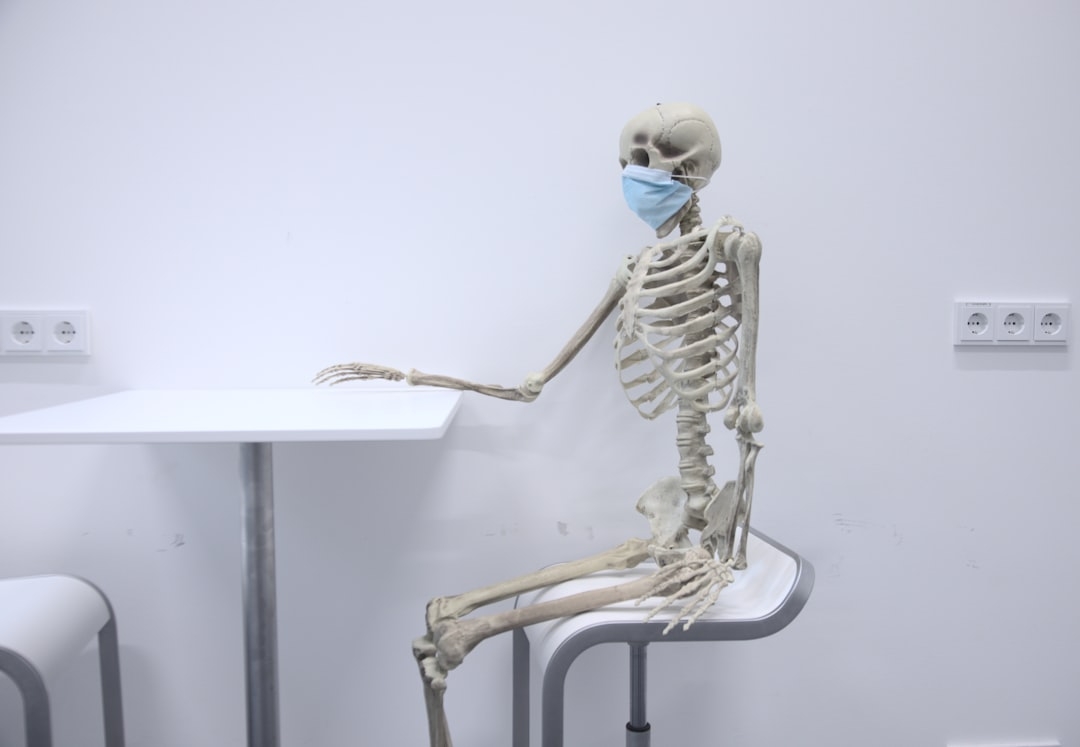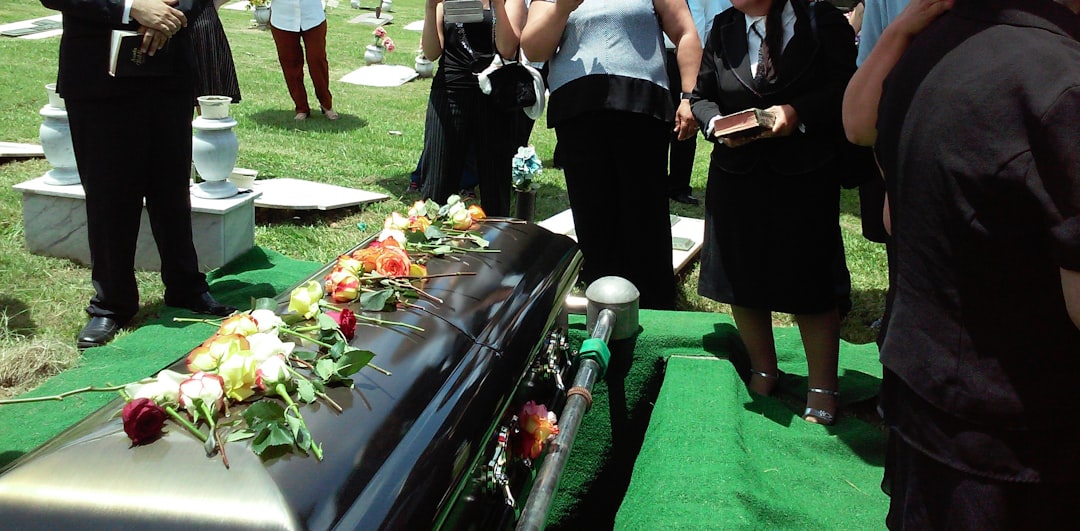

Loss of consortium is a legal term that refers to the deprivation of the benefits of a family relationship due to injuries caused by a tortfeasor. The concept primarily arises in personal injury and wrongful death cases, where the injured party's spouse or close family member can seek compensation for the loss of companionship, affection, and other relational aspects that have been negatively impacted.
At its core, loss of consortium recognizes that relationships are central to the human experience. When an individual is severely injured, the ripple effects extend far beyond physical pain and suffering. Spouses may lose their intimate connection; children might miss out on parental guidance and support. Essentially, it acknowledges that injuries affect not just individuals but also their families.
Historically, the claim for loss of consortium was limited to husbands seeking redress for injuries to their wives. However, modern law has evolved to allow both spouses equal standing in bringing forward such claims. Some jurisdictions even extend this right to other close family members like children or parents, recognizing that these relationships too can be drastically altered by serious injury.
To successfully claim loss of consortium, certain elements generally need to be proven in court. These include establishing a valid marriage or familial relationship at the time of injury and demonstrating how the injury has detrimentally affected that relationship. Additionally, evidence must show that the tortfeasor's actions directly caused these changes.
The damages awarded for loss of consortium are typically non-economic since they aim to compensate for intangible losses such as emotional distress and loss of companionship rather than direct financial costs. This makes quantifying them complex; courts often rely on testimonies from those affected and expert opinions to gauge an appropriate amount.
Critics argue that claims for loss of consortium can lead to exaggerated awards since emotional damage is subjective and difficult to measure accurately. However, proponents maintain that these claims are essential for delivering comprehensive justice by acknowledging all dimensions of harm inflicted by negligent or malicious actions.
In summary, loss of consortium reflects a broader understanding of injury impact within legal frameworks. It underscores how significant others play integral roles in our lives and ensures they receive recognition when those relationships suffer due to someone else's wrongdoing. As society continues evolving its perceptions about family dynamics and emotional well-being, so too will interpretations and applications of this vital legal concept develop further.
Loss of consortium is a legal concept that has deep roots in the history of tort law. At its core, it refers to the deprivation of the benefits of a familial relationship due to injuries caused by a third party's wrongful act. This cause of action allows an injured party's spouse or family member to seek compensation for the loss of companionship, affection, comfort, and sexual relations that they previously enjoyed.
The historical context of loss of consortium can be traced back to English common law. Originally, it was primarily recognized as a remedy available only to husbands whose wives had been injured or deprived. This gender-specific application stemmed from archaic notions about marriage and property rights. Under these old laws, wives were considered their husband's property; thus, any injury to a wife was seen as an affront against her husband's proprietary interests.
However, over time, societal perceptions evolved and so did the legal landscape. By the late 20th century, many jurisdictions had expanded the scope of loss of consortium claims to include both spouses equally. The shift mirrored broader changes in societal values toward greater gender equality and recognition of mutual interdependence within marital relationships.
In contemporary law, loss of consortium claims are not limited strictly to married couples but may extend to other close familial relationships depending on jurisdictional statutes and case law precedents. For instance, parents may claim loss of consortium for injuries affecting their children in some regions.
To establish a claim for loss of consortium today, several elements typically need to be proven:
1) A valid marriage or qualifying relationship existed at the time of injury.
2) The injured party suffered harm due to another's negligence or intentional wrongdoing.
3) The non-injured party experienced a tangible diminution in their relational benefits because of this injury.
Courts assess these claims with careful consideration given their subjective nature; quantifying emotional and relational losses presents inherent challenges compared with more straightforward economic damages like medical bills or lost wages.
Despite its complexities, recognizing loss of consortium serves an important function-it acknowledges that personal injuries do not merely impact individuals physically but reverberate through their intimate relationships as well. Compensation for such losses underscores society's valuation not just on physical well-being but also on emotional bonds and human connections.
In conclusion, while rooted in antiquated principles regarding marital roles and property rights, modern interpretations have transformed loss of consortium into a more inclusive doctrine reflecting current values around fairness and relational integrity. It stands as testament both to how far we've come legally in addressing personal harm holistically and how much further we might go in ensuring justice encompasses all facets affected by injury.
Finding the best wrongful death lawyer for your case is a crucial step in seeking justice and compensation for your loss.. One often overlooked but essential aspect of choosing the right attorney is understanding their fees and payment structures.

Posted by on 2024-09-19
Preparing for Trial: What to Expect for How to Secure Maximum Compensation with a Top Wrongful Death Lawyer Losing a loved one is an indescribable pain, and when that loss is due to someone else's negligence or intentional actions, the grief can be compounded by a deep sense of injustice.. In such tragic circumstances, securing maximum compensation through a wrongful death lawsuit can provide some measure of solace and financial stability.

Posted by on 2024-09-19
Navigating the labyrinthine corridors of the legal system after a loved one’s wrongful death is an emotionally taxing and complex endeavor.. The decision to settle the case or proceed to trial is perhaps one of the most critical junctures in this journey.

Posted by on 2024-09-19
Choosing the right wrongful death lawyer is not just about finding someone with the necessary legal expertise; it’s also about ensuring a sense of comfort and trust in the attorney-client relationship.. This emotional and psychological dimension can significantly influence the overall experience, particularly during such a sensitive time.

Posted by on 2024-09-19
When faced with the unimaginable grief and complexity that follows the wrongful death of a loved one, choosing the right attorney can seem overwhelming.. Making an informed decision based on a comprehensive evaluation is crucial to avoid costly mistakes.

Posted by on 2024-09-19
Loss of consortium is a legal term that refers to the deprivation of the benefits of a family relationship due to injuries caused by another party. This concept fundamentally acknowledges the significant impact that injury or death can have on various types of personal relationships. When we discuss the types of relationships affected by loss of consortium, it is essential to understand that these disruptions can extend beyond just romantic partnerships and can deeply influence familial bonds, friendships, and even broader social connections.
At its core, loss of consortium often pertains to the marital relationship. The harm inflicted upon a spouse who has suffered severe injury or untimely death does not merely affect them individually but also profoundly impacts their partner. The injured spouse may no longer be able to provide companionship, emotional support, or physical intimacy. This absence can lead to feelings of loneliness, frustration, and immense grief for the uninjured partner. For many couples, these emotional strains can become overwhelming and may challenge the very foundation of their relationship.
Beyond marriages, parental relationships are significantly affected by loss of consortium as well. When a parent suffers an injury or passes away, children are deprived not only of daily care and guidance but also of emotional nurturing and stability. A parent's role in providing love, discipline, and security cannot be understated; thus, their sudden inability to fulfill these roles leaves an indelible void in a child's life. In some cases, this can lead to long-term psychological effects for children who struggle with feelings of abandonment and insecurity.
Siblings too can experience the ripple effects of loss within a family unit. The dynamics between brothers and sisters often hinge on shared experiences and mutual support systems. When one sibling undergoes trauma or is lost entirely due to another's negligence or malfeasance, surviving siblings might find themselves grappling with intensified responsibilities at home or bearing emotional burdens they were not prepared for.
Friendships are yet another sphere where loss of consortium makes its mark. Close friends often serve as extended family members who provide vital social support networks outside traditional familial structures. An injury that incapacitates someone or leads to their premature demise can sever these ties abruptly-or at least strain them considerably-changing social interactions forevermore.
Moreover, even broader community relations feel this impact indirectly but palpably over time. Individuals play various roles within their communities-as mentors, volunteers, coaches-and contribute in ways both big and small towards communal harmony and progressiveness. Their incapacitation or absence creates gaps that others must scramble to fill while simultaneously coping with collective grief.
In conclusion, loss of consortium encompasses far more than just spousal relationships; it reverberates through every connection tethered closely enough around an individual's life orbit-from immediate family members like children and siblings down through circles comprising dear friends-and extends outward into societal frameworks at large where one's contributions are felt keenly missed amidst prevailing challenges therein lying ahead post-crisis scenarios where adaptation becomes key navigating altered relational landscapes emerging thereafter inevitably so compellingly true indeed too poignantly felt across all spectrums affected thereby comprehensively speaking thus undeniably validly recognized henceforth accordingly acknowledged evermore rightfully so essentially crucially needed always remembered empathetically understood ultimately finally grasped unequivocally accepted universally embracing reality faced bravely together united stronger resiliently despite adversities endured collectively shared humanely enduring lifelong inevitably intertwined experiences reshaping transformed forever meaningfully enriched lovingly cherished eternally valued timelessly upheld indomitable spirit persevering resolutely steadfast till end never forgotten perpetually honored cherished memories lasting legacies thriving onward boundless unwavering hope sustaining endlessly inspiring continually uplifting bound

Loss of consortium is a legal claim that arises when an individual suffers the loss of companionship, affection, and other relational benefits due to the injury or death of a loved one. To effectively prove loss of consortium in a court of law, several critical elements must be established. These elements are essential as they provide the foundation upon which the claim rests and enable the court to make an informed decision.
The first element required to prove loss of consortium is establishing the relationship between the plaintiff and the injured party. Typically, this relationship is that of a spouse or close family member; however, some jurisdictions may also recognize claims from domestic partners or other individuals with a significant emotional bond. Demonstrating this connection involves providing evidence such as marriage certificates, cohabitation records, or testimonies that substantiate the depth and nature of the relationship.
Secondly, it is crucial to show that the injured party indeed suffered harm due to an incident caused by another's negligence or wrongful act. This involves presenting medical records, expert testimonies, accident reports, and any other documentation that outlines the extent and impact of the injuries sustained by the loved one. Without clear evidence of injury attributable to someone else's actions, a loss of consortium claim cannot proceed.
Once injury has been established, the next step is proving how this injury directly affected the relationship between the plaintiff and their loved one. This aspect often requires demonstrating tangible changes in daily life and interactions. For example, if before the incident there was regular companionship involving shared activities like traveling or hobbies that are no longer possible post-injury, these changes need to be documented. Emotional testimonies from friends and family who have observed these shifts can also serve as powerful evidence.
Moreover, quantifying non-economic damages such as emotional distress and loss of intimacy can be challenging but necessary. The court needs to understand how deeply these losses have affected not just day-to-day living but also long-term plans and mental well-being. Psychological evaluations might be employed here to assess trauma levels experienced by both parties due to their altered circumstances.
Finally, causation must be clearly established linking directly how another's negligent behavior led to both physical injuries for one party and consequent relational suffering for another. Legal arguments should tie together all pieces of evidence presented into a coherent narrative showing cause-and-effect relationships among events leading up through current suffering experienced by those involved.
In conclusion, proving loss of consortium requires meticulous preparation involving thorough documentation at every stage: verifying relational bonds; substantiating injury details; illustrating resultant changes in lifestyle; assessing emotional impacts; ultimately drawing causal connections back towards responsible parties' actions causing disruption within familial bonds cherished dearly before unwarranted incidents occurred disrupting them forevermore
Loss of consortium is a significant factor that courts consider when awarding damages in personal injury cases. This term refers to the deprivation of the benefits of a family relationship due to injuries caused by another's negligence or wrongful act. The impact on damages awarded can be profound, as it addresses the non-economic losses suffered by the spouse or family members of the injured party.
In essence, loss of consortium encompasses various aspects such as companionship, emotional support, affection, and sexual relations. When an individual suffers a severe injury, their ability to fulfill these roles within a relationship may be substantially diminished or altogether lost. Courts recognize that not only is the injured person affected, but their loved ones also endure significant emotional and relational hardships.
To quantify loss of consortium, courts examine several factors. The nature and severity of the injury are paramount; more catastrophic injuries generally lead to higher compensatory awards for loss of consortium. The quality and stability of the marriage or relationship prior to the injury is also scrutinized-stronger, longer-lasting relationships might yield higher damages due to the greater perceived impact on both parties.
Testimonies from spouses and expert witnesses play a crucial role in establishing the extent of this loss. For instance, mental health professionals might provide insights into how the injury has disrupted familial dynamics and emotional well-being. These testimonies help paint a vivid picture for juries or judges who must decide on appropriate compensation.
Furthermore, societal recognition of diverse family structures means that loss of consortium claims are increasingly inclusive. Same-sex partners, unmarried cohabitants with strong emotional bonds, and even children can potentially claim damages depending on jurisdictional statutes and case law precedents.
The awarded damages aim not just to compensate but also to acknowledge the profound changes in life quality resulting from an injury. While monetary compensation can never fully replace lost companionship or support, it serves as a tangible form of acknowledgment for suffering endured by those closely tied to the injured party.
In conclusion, loss of consortium significantly impacts damages awarded in personal injury cases by addressing non-economic detriments experienced by family members due to another's negligence. Through careful deliberation over multiple factors-such as injury severity and relationship dynamics-courts strive to provide equitable compensation for these deeply personal losses.
Loss of consortium is a nuanced area of personal injury law that varies significantly by jurisdiction. At its core, the term refers to the deprivation of the benefits of a family relationship due to injuries caused by a tortfeasor's actions. Traditionally, this has meant the loss of companionship, affection, and sexual relations between spouses. However, as society evolves and state laws adapt, so too do the interpretations and applications of loss of consortium claims.
In most jurisdictions within the United States, loss of consortium claims are primarily recognized for spouses. The injured party's spouse may seek compensation for their own suffering due to their partner's injury. This type of claim acknowledges that harm done to one spouse can ripple through the family unit, causing emotional and relational damage that deserves recognition and redress in court.
However, some states have expanded the scope beyond just spousal relationships. For example, certain jurisdictions allow parents to file for loss of consortium if their minor child is severely injured. This recognizes that the parent-child bond is profound and that injuries disrupting this relationship can cause significant emotional distress. Conversely, other states remain more conservative in their approach, limiting such claims strictly to marital relationships.
Consider California as an example: here, loss of consortium claims are well-established for spouses but not extended to parent-child relationships or unmarried partners. California courts emphasize the importance of legal marriage when considering these cases. On the other hand, Massachusetts acknowledges not only spousal claims but also allows parents to seek damages when a child suffers catastrophic injury under specific circumstances.
The nature and extent of recoverable damages in loss of consortium claims also vary widely from state to state. Some jurisdictions place caps on non-economic damages like pain and suffering or emotional distress, which directly affects how much plaintiffs can receive in these cases. In contrast, other states provide juries with broad discretion in awarding damages based on their assessment of harm suffered.
Moreover, defenses against loss of consortium claims differ across jurisdictions as well. Comparative negligence doctrines-whereby any fault attributed to the injured party can reduce or eliminate recovery-are applied differently depending on local laws.
Internationally speaking, common law countries such as Canada and Australia recognize similar concepts but with their unique twists shaped by local statutes and case law precedents. For instance, Canadian provinces generally permit spousal claims but vary regarding parental ones; meanwhile Australian courts might take into account different social policies underpinning familial relationships.
In conclusion, while loss of consortium is a universally acknowledged concept catering to relational harms stemming from physical injuries within families or marriages-it remains highly variable depending upon jurisdictional interpretations and legislative frameworks governing each region's approach towards personal injury compensations. Understanding these nuances requires careful examination both locally within individual states or countries globally-to ensure justice appropriately reflects societal values placed upon intimate human connections disrupted by unforeseen tragedies.
Loss of consortium is a legal concept that pertains to the deprivation of the benefits of a family relationship due to injuries caused by a tortious act. In simpler terms, it refers to the loss experienced by an individual when their spouse or family member suffers serious injury, affecting their companionship, affection, and sexual relations. This concept is often invoked in personal injury and wrongful death lawsuits. To better understand this notion and its application in the legal arena, it's instructive to delve into several case studies and precedents.
One landmark case that sheds light on loss of consortium is Hitaffer v. Argonne Co. (1950). In this pivotal case, the court recognized for the first time that a wife could claim loss of consortium due to her husband's injuries caused by his employer's negligence. Before this decision, only husbands could claim such damages because wives were traditionally seen as providing services rather than being entitled to them. The Hitaffer decision was groundbreaking in acknowledging that both spouses have reciprocal rights to each other's society and companionship.
Another significant precedent is Rodriguez v. Bethlehem Steel Corp. (1974), where California's Supreme Court extended the right to claim loss of consortium damages to spouses regardless of gender. In this case, Mr. Rodriguez sustained severe injuries at work due to alleged negligence on part of Bethlehem Steel Corp., greatly impairing his ability to provide affection and companionship to his wife. The court's ruling was instrumental in ensuring gender equality in claims for loss of consortium.
A more recent example can be found in Turner v. Whittel & Melton (2019), where Mrs. Turner sought damages for loss of consortium after her husband was critically injured in an automobile accident involving a drunk driver represented by Whittel & Melton law firm. Here again, the court affirmed her right to compensation for the emotional and relational toll taken on her marriage due to her husband's incapacitation.
These cases underscore several key principles regarding loss of consortium claims:
However, proving loss of consortium can be quite challenging as it requires demonstrating not just physical separation but also emotional estrangement resulting from one partner's injuries. It involves detailed testimonies about personal aspects of marital life which some may find intrusive or uncomfortable.
In conclusion, loss of consortium remains a vital yet complex area within tort law aimed at compensating individuals for non-economic damages stemming from severe disruptions in familial relationships caused by another's wrongdoing. Through various landmark cases like Hitaffer, Rodriguez, and Turner, courts have progressively acknowledged its importance while adapting its principles to contemporary standards of justice and equality.
Loss of consortium is a legal term that refers to the deprivation of the benefits of a family relationship due to injuries caused by a third party. While it has played an essential role in recognizing the ripple effects of personal injury on family life, the concept has not been without its criticisms and controversies.
One significant criticism stems from the perceived subjectivity and ambiguity associated with valuing loss of consortium claims. Unlike straightforward economic damages such as medical bills or lost wages, loss of consortium deals with intangible losses like companionship, affection, and sexual relations. These elements are inherently difficult to quantify in monetary terms, leading some critics to argue that such claims invite inconsistency and unpredictability in court rulings. Judges and juries are often left wrestling with abstract concepts, which can result in wide variations in award amounts for similar cases.
Another point of contention revolves around gender biases historically embedded within these claims. Traditionally, loss of consortium claims were predominantly filed by husbands seeking compensation for the impact on their marital relationship caused by their wives' injuries. This historical context reflects an outdated view where women's roles were primarily seen through their domestic contributions and capacity to provide companionship to their husbands. Though modern law allows both spouses to file for loss of consortium equally, lingering perceptions can sometimes influence how these cases are viewed and awarded.
Furthermore, some critics question whether loss of consortium claims should be recognized at all within tort law. They argue that introducing emotional or relational damages into personal injury lawsuits complicates what should be a more straightforward process focused on direct physical harm and financial losses. Opponents suggest that non-economic damages like pain and suffering already cover many aspects related to relational impacts and adding another layer creates redundancy.
There is also controversy surrounding the extension of loss of consortium claims beyond spousal relationships. Courts have grappled with whether parents or children should be able to claim for loss when a close family member is injured or killed due to someone else's negligence. Expanding these claims raises complex questions about where to draw the line on familial relationships deserving compensation and potentially opens floodgates for numerous additional lawsuits.
In response to these criticisms, proponents assert that loss of consortium acknowledges important social values by formally recognizing how devastating injuries affect not just individuals but entire families. They argue this type of claim serves as a form of societal acknowledgment that personal injury extends beyond physical wounds, impacting emotional bonds and family dynamics profoundly.
In conclusion, while loss of consortium provides critical recognition for the far-reaching consequences of injury within family structures, it remains fraught with debates over valuation methods, potential biases, conceptual clarity within tort law frameworks, and scope expansion issues. As society continues evolving its understanding of familial roles and relationships, so too will likely evolve our legal approaches toward addressing these deeply felt but elusive losses.